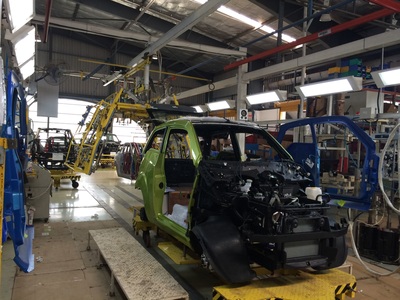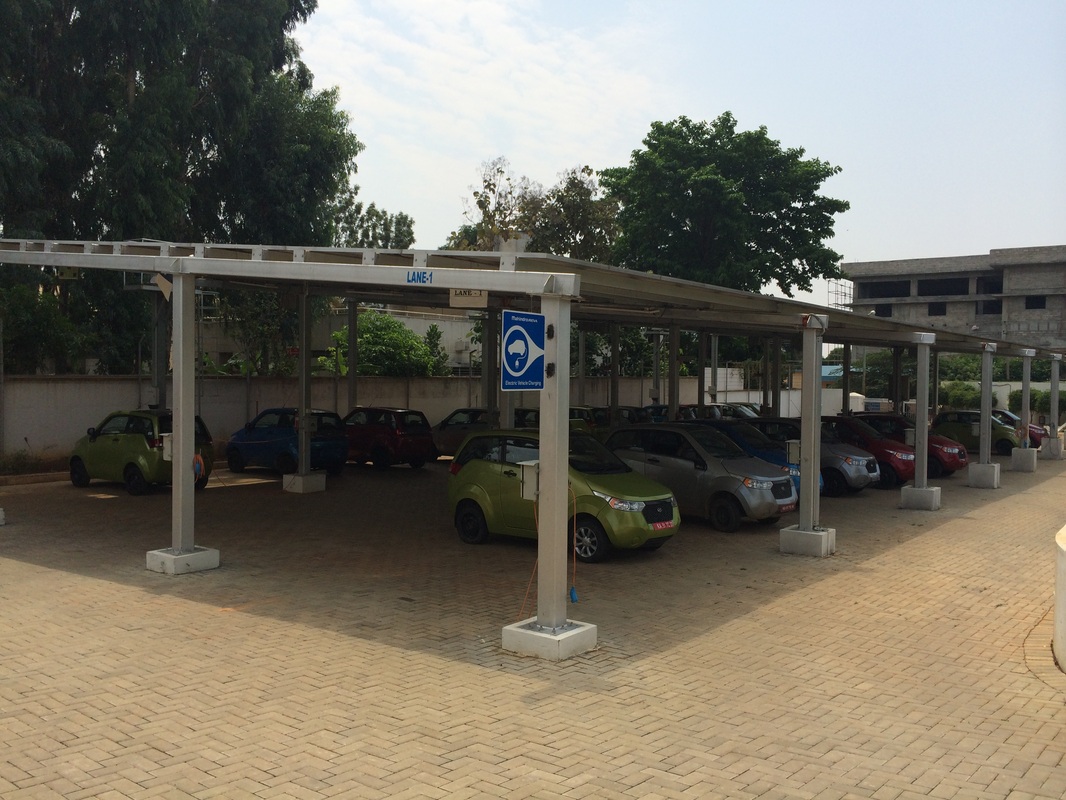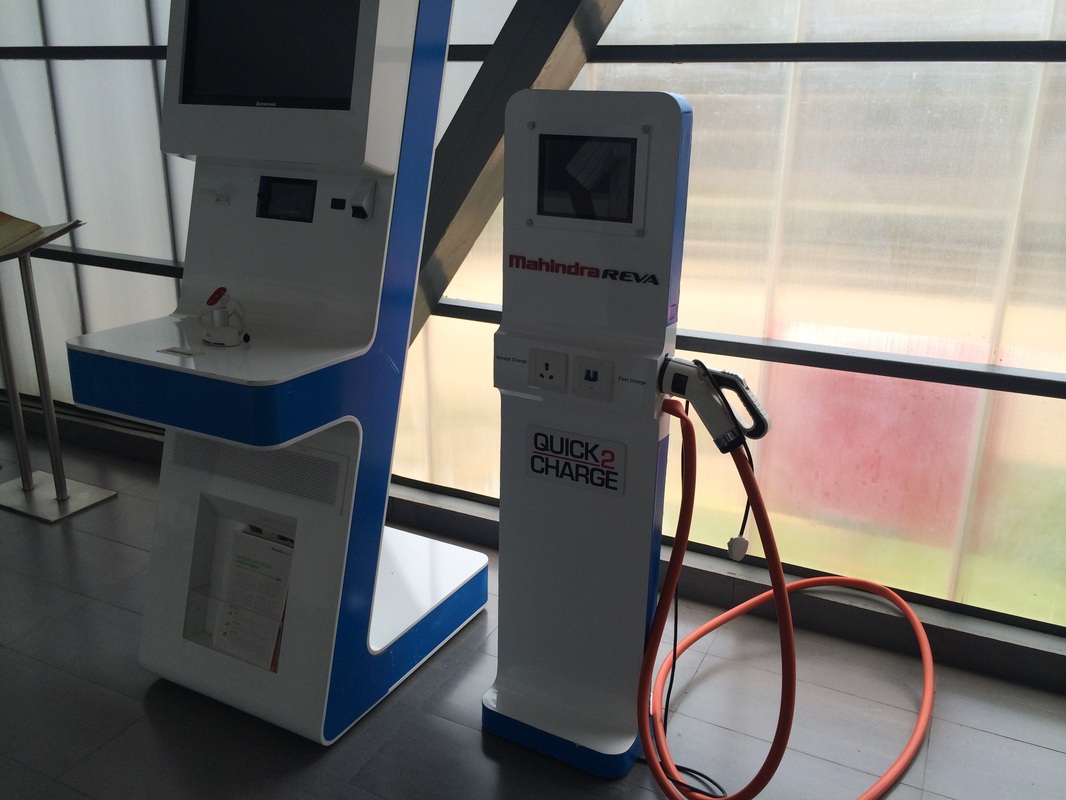the 'platinum' rating.
Here are some cool energy saving features used at the plant
- Solar energy caters to 35% of energy consumption
- Solar powered charging stations
- Drip irrigation system for the gardens
- 100% treatment and reuse of gray waste and onsite rain harvesting
- Improved fresh air and ventilation systems
- Skylights that reduce electricity consumption
- LED lighting all over the factory
The only car manufactured in this plant is the Mahindra e2o. The first thing I noticed, when i entered the plant was the organization of factory space. The floor space was divided into multiple sections, with each stage progressively completing a part of the manufacturing process.
I was accompanied by Mr Suresh Kuttan, National Sales manager at Mahindra Reva along with an engineer at the plant who summarized the steps taken in each section
- In the first stage of manufacturing the e2o, the power-train, motor and suspension are fitted in the chassis.
- In the next stage, the steering racks and break systems of the vehicle are fitted
- In the next stage, a unique number is provided for the vehicle. After this the AC is fitted in the system. Next the control boards are fit in. This contains the energy management system and other systems which are pre-assembled.
- Next, the roof gets bonded to the vehicle
- The battery pack is then fitted into the car. The battery pack is sub assembled from another section known as the battery testing area.
- The battery pack is then covered using a battery box. The inlet and outlet air cooled system is then fitted on the battery. The pack is designed to use the cabin air and cool itself. If the AC is on, it uses cool air from the compressor to cool itself.
- In the next stage they bond the vehicle with pre-colored panels. They use an adhesive to hold the vehicle and the panel.
- Next the rear bumper, roof liner, seat belts are fitted in.
- The glass is then bonded in the front and rear.
- Miscellaneous items like front, rear speakers, seats, doors are fit in. Other parts like the fender, brake oil filling, charging sockets, wiper systems and steering system are too fitted at this stage.
- After this process there is a final quality check. The wheels are assembled, the vehicle is ready to roll out for the first time, for real testing.
- At the end of the line, there are lots of tests performed. These include wheel alignment, shower testing and road tests.
- The vehicles in the solar park are then delivered to customers
What i found is that the Mahindra Reva factory is more of an assembly plant, they follow a design philosophy where lot of the components are manufactured by suppliers and the plant itself is a just in time assembly process.
This reduces the amount of land space. Given in that land space, it is capable of producing 30,000 electric vehicles per year, which is very effective use of space. This brings down the cost of investment, and the processes are very simple.
Also they are eliminating two or three very high capital intensive costs. For example - they don't have sheet metal construction, so no need to have a sheet metal stamping. They have pre-impregnated panels for color so they don't need a paint shop. They don't do much welding process, which is done at the supplier’s end. This brings down the net investment.
To give you a sense, following standard manufacturing process of a regular car, would be 10 to 20x capital intensive than what they have spent here. This is important as EV volumes are going to be relatively lower so you need a low cost manufacturing approach to become profitable
After visiting the plant, i visited the Mahindra Reva corporate office and took lots of photos.
Here goes!
So, are you a proud Indian now?
Further Reading
Read more about the Mahindra e2o
Read an ownership blog on the Mahindra e2o














